A Wine Tour in Antequera
It brought back memories of South Africa’s Western Cape.
Last week we took a wine tour in the countryside outside Antequera. 15 minutes out of the city and following a scenic route in the hills above Antequera, the winery is situated at the base of the Sierra de Torcal mountain range. It is an incredibly stunning location.
The tour was arranged by Mission Adventure Holidays, an Antequera-based company run by Andy and Hennie. They do all kinds of tours, their wine tour being the least adrenaline-inducing. It was Andy who picked us up in Antequera with his 4×4 and it would be Hennie who guided us on the tour.
We were 4 on the tour, the other two participants a couple of young Welsh girls. We didn’t know it at that point but we would end up having a great time with them (we still don’t know their names, we called them “Greenie” and “Pinkie” after the coloured dresses they were wearing).
The winery is Bodega Gross Hermanos, a young winery that started producing wines in 2016 and which has already won some international awards. Although small (they produce 6,500 bottles/yr) they grow different grapes: Cabernet Sauvignon, Syrah, Merlot, Grenache, Pinot Noir and Petit Verdot (a grape typically used in Bordeaux wines). Most of the wines produced are reds except for their rosé – a rosé that would be one of the most interesting rosé wines I’ve had (more on that later).
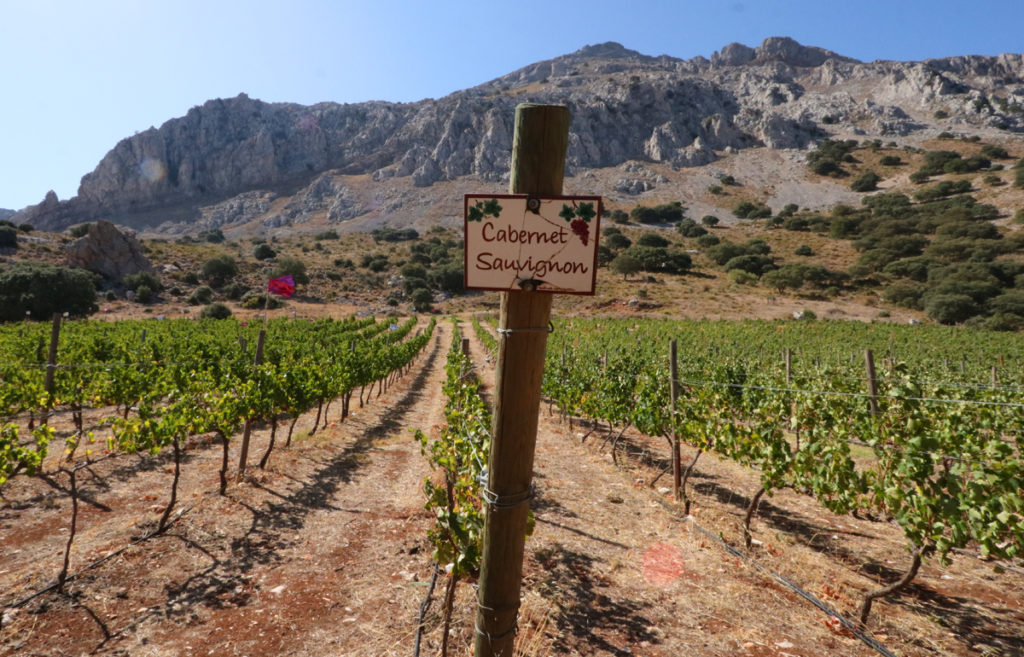
The History of Wine in Malaga
Having all introduced ourselves, Hennie started the tour with a walk through the vineyards and recounted some of the history of wine production in Malaga province. What many don’t know is that Antequera has a history of wine production dating back to 3500 BC (they found traces of wine making in the Antequera Dolmens). When the Romans ruled Iberia, they even exported wine to Rome. Why? Even with all the wine produced in Italy, the Emperors wanted variety. And that meant exporting wines by the boatload from the Malaga region.
Wine production abruptly stopped in 1878 when Europe was hit by vine pests: phylloxera, a tiny aphid, had arrived from North America on ships. Feeding on the roots of European vines, they decimated wine production in the region (and throughout much of Europe).
It took over 40 years for wine to come back to the region, with the solution to the pest problem being to graft the local vines with American roots (which have resistance to phylloxera). Despite that, wine production in Malaga has never fully recovered and is today a very small percentage of all wine produced in Spain. New, modern wineries are popping up however with many producing non-traditional wines. Bodega Gross Hermanos is an example of that (the area around Ronda is another region that has become popular in recent years for their innovative wines).
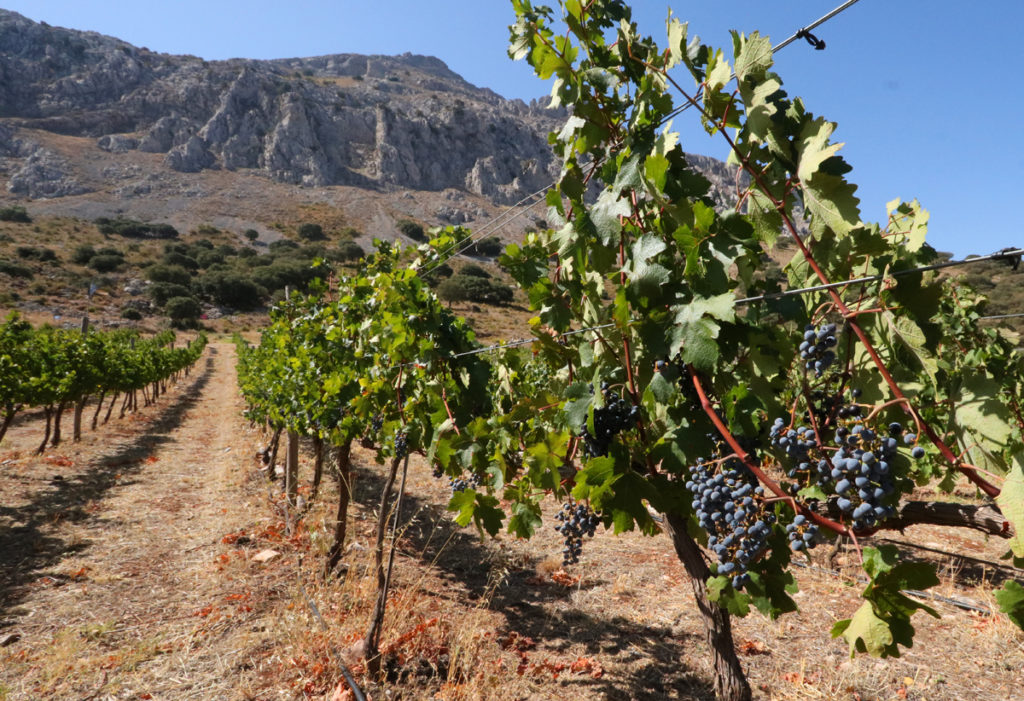
Around the winery
I’m always curious about what kind of animals people have to contend with when living in the wild. Hennie told me that the biggest problem are the wild boars. Just a few days back one of their dogs got in a fight with one and needed stiches. Other animals you might see: Fox, Deer, Egyptian weasels, and Ibex coming down from the mountains (they’re hunted from November to May so they’ll often come to lower latitudes to graze). If you’ve never seen an Ibex I can tell you that they’re very impressive (having seen them when hiking El Torcal).
You’ll also see lots of history. An underground river comes up a few hundred meters from the main house of the winery, the source somewhere in the mountains. The Romans managed the river, creating a channel that brought water all the way to Antequera. You’ll see Roman and Moorish wells along the route which are still in use today.
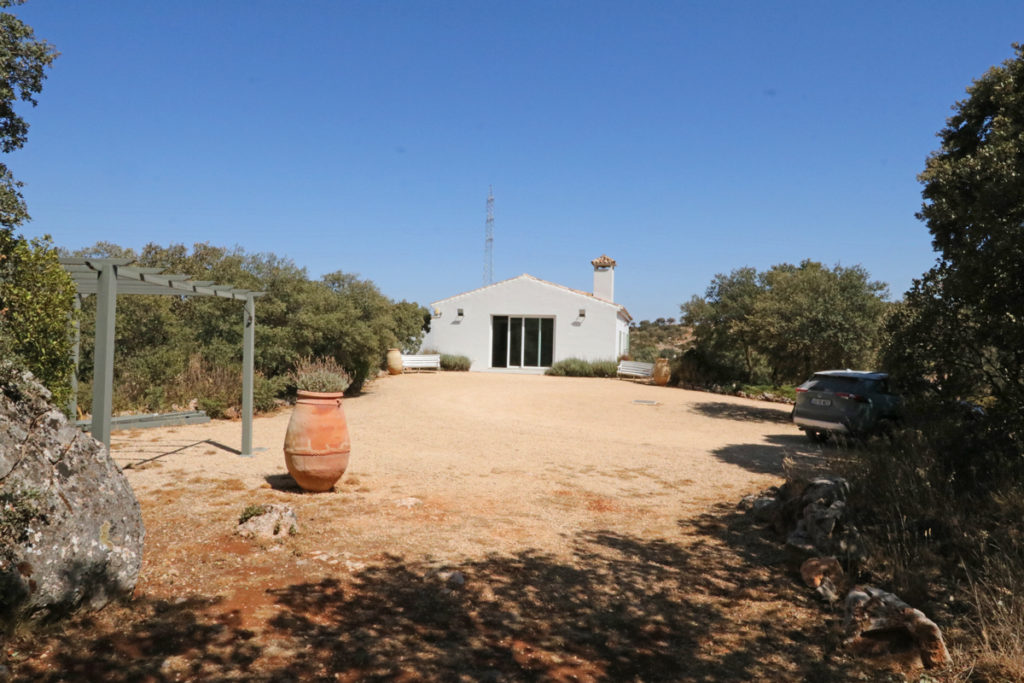
Production facilities
The winery has a large tasting room where visitors can sample their wines. Just below it, going down some stairs, are their production facilities containing storage tanks, barrels to age their wines (Bodega Gross Hermanos uses French oak barrels – which I learned are 900 Euros a barrel!) and bottling and corking machines. Hennies explained how the whole process worked.
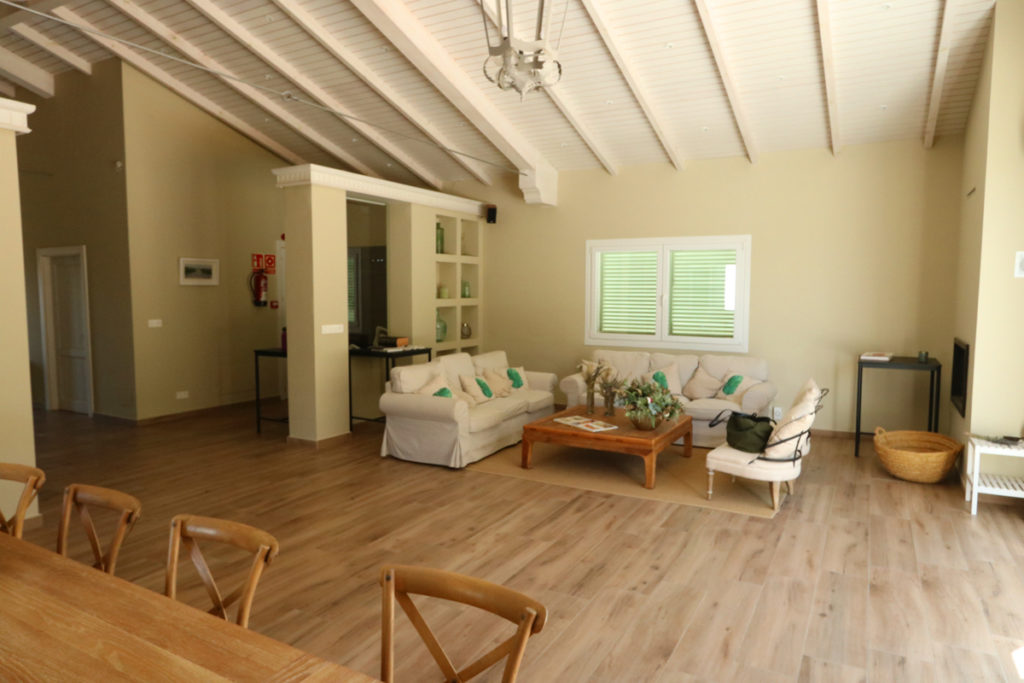
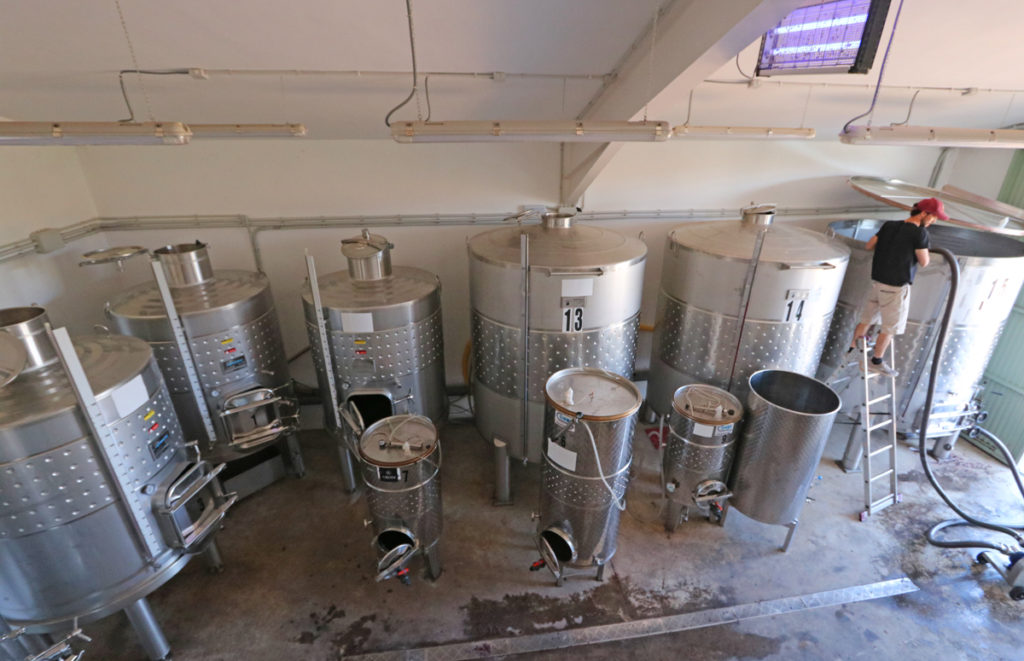
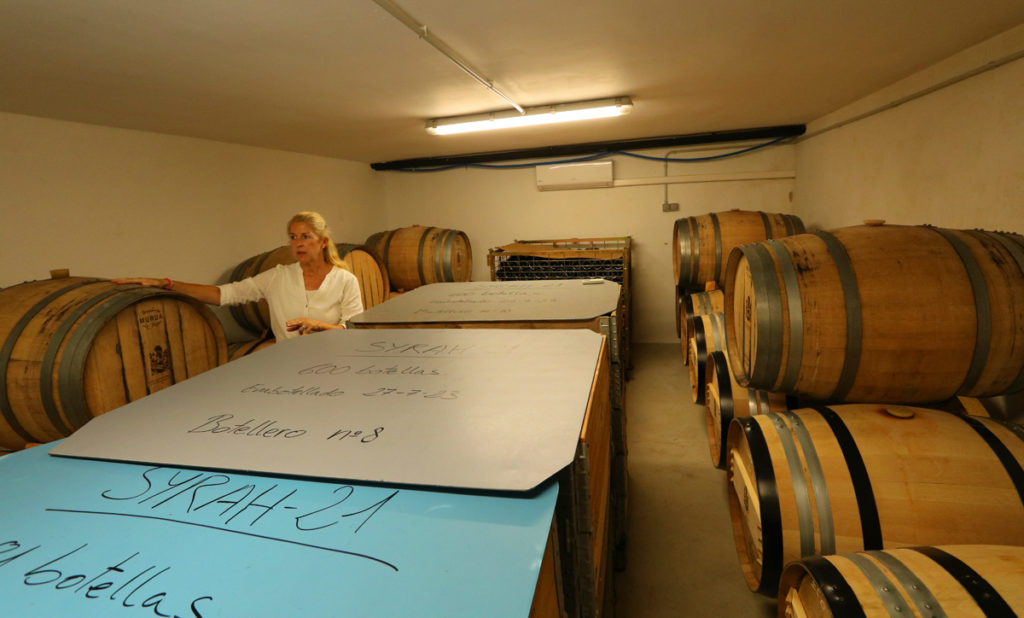
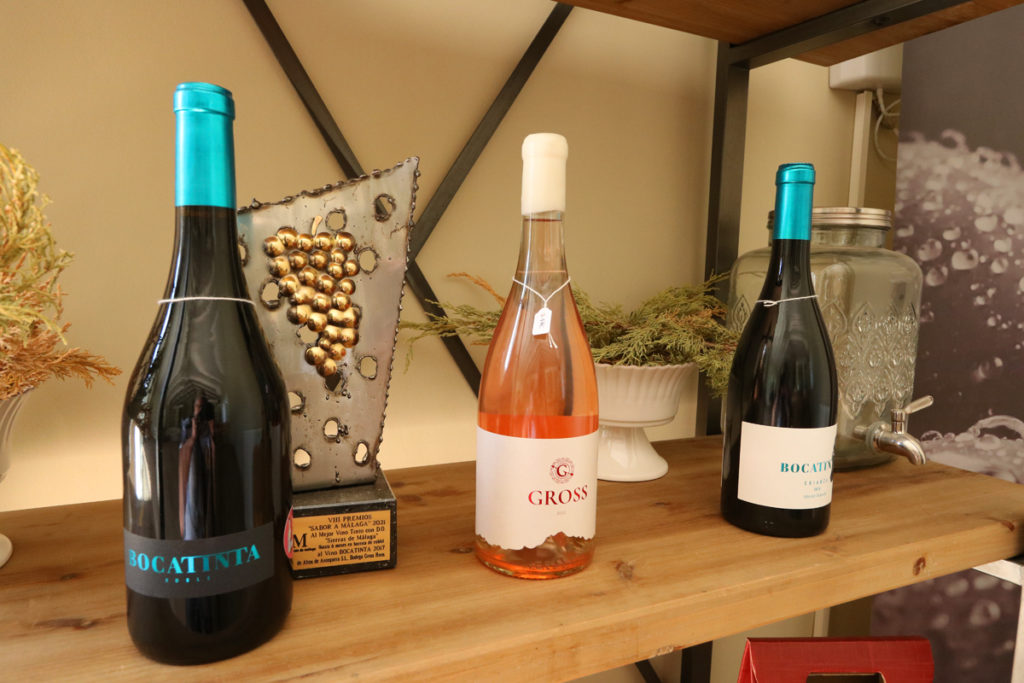
Wine tasting!
We spent about 30 minutes between the time spent walking around the vineyards and the production facilities. It kept us all moving and was the perfect amount of time to keep everyone interested.
By then we all looked forward to drinking some wine. Instead of drinking in the indoor tasting room we were led outside to a large picnic table which was protected from the sun by a large oak tree. In the background loomed the mountains – on one side El Torcal, on the other the Sierra de Chimenea*.
*As an aside from the wine tour: in between the two is the “saddle”, a break in the mountains that makes it the easiest access point up to the peaks from Antequera. The winery owns all the land from the winery up to the peaks at the top and Mission Adventure Holidays is thinking of promoting hikes here. If hiking is something that interests you, I would recommend it. It is fantastic geography.
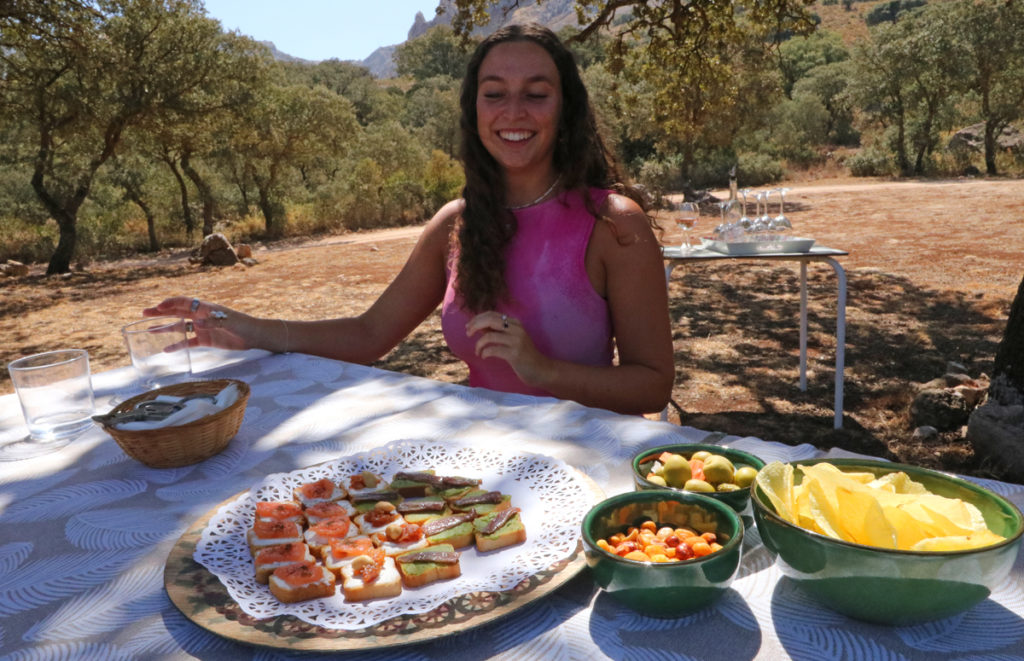
Sitting in the shade under the tree we were treated to salmon and anchovy tapas and our first wine: Bodega Gross Hermanos’ signature rosé.
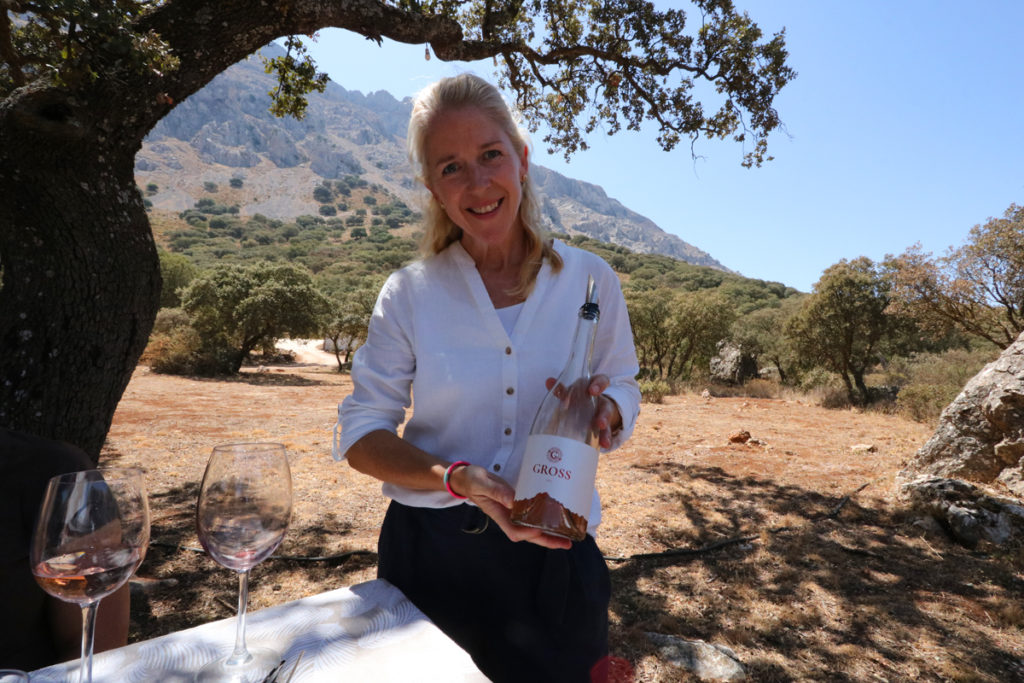
With a light salmon-coloured hue, it is the lightest rosé (in colour) I’ve ever experienced. The reason for the colour: although made from a mix of Cabernet, Grenache & Pinot Noir grapes (all red grapes), the skins and seeds from the grapes are extracted at the very beginning of the process. That explains the colour but also the freshness and the subdued fruity flavors. I’ve never been a lover of rosés, but this is a beautiful wine (it was chosen as one of the 50 best rosé wines in the world in 2023).

The next three wines were all reds, all versions of their Bocatinta line featuring Merlot, Syrah and Cabernet Sauvignon grapes. Why have three of the same reds? All are from different years. The result is three very different wines. The goal of tasting the same line of reds was to demonstrate the effect of variables such as rainfall, excess cold (or heat) and aging on a wine.
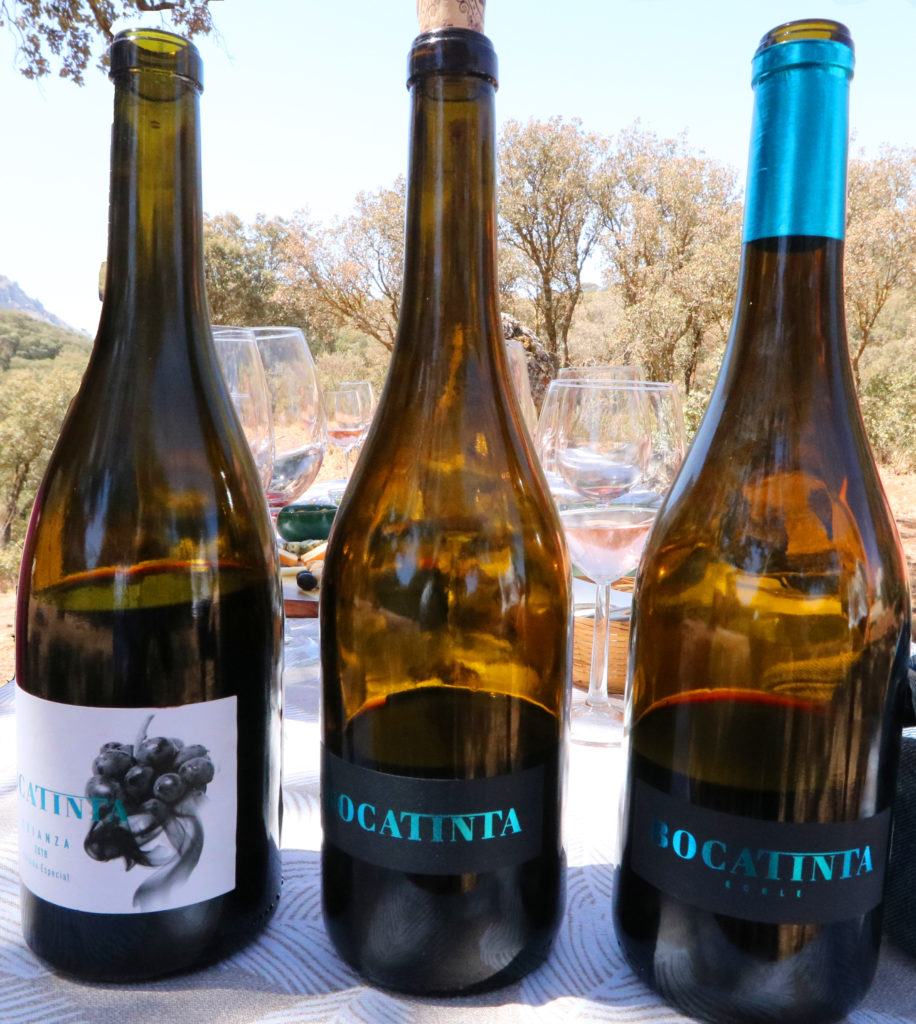
It was interesting seeing the differences and you can tell which were the most popular wines by what is left in the bottles above. Among the participants in the group, the Bocatinta “original” and the Bocatinta Roble were favorites: both had a beautiful nose of fruits, deep and smooth flavours, and lasting fruity aftertaste. The Crianza, ironically the longest aged of the wines, tasted underaged. Although good by any standard, it didn’t match the other two.
It just goes to show how the different factors that affect wine production year-to-year come into play.
*Note: when leaving, we bought 2 bottles of wine: the rosé and the “original” Bocatinta. Cost: 26 Euros. Excellent wines that we’re saving for a special occasion.
Apart from the wines, we had excellent and abundant food. The salmon and anchovy tapas paired perfectly with the rosé, the wines were paired with various Spanish cheeses and cold cuts.
We also had great company. We ended up having a great time with the girls and Hennie.
Thinking of taking a wine tour? I’ve seen prices for wine tours in the Antequera region ranging between 150-200 Euros per person on Getyourguide. Don’t do that. The Mission Adventure Holiday’s wine tour (which lasted 3 hours) starts at 50 Euros/pp and includes transport from/to Antequera.
Very much recommended.
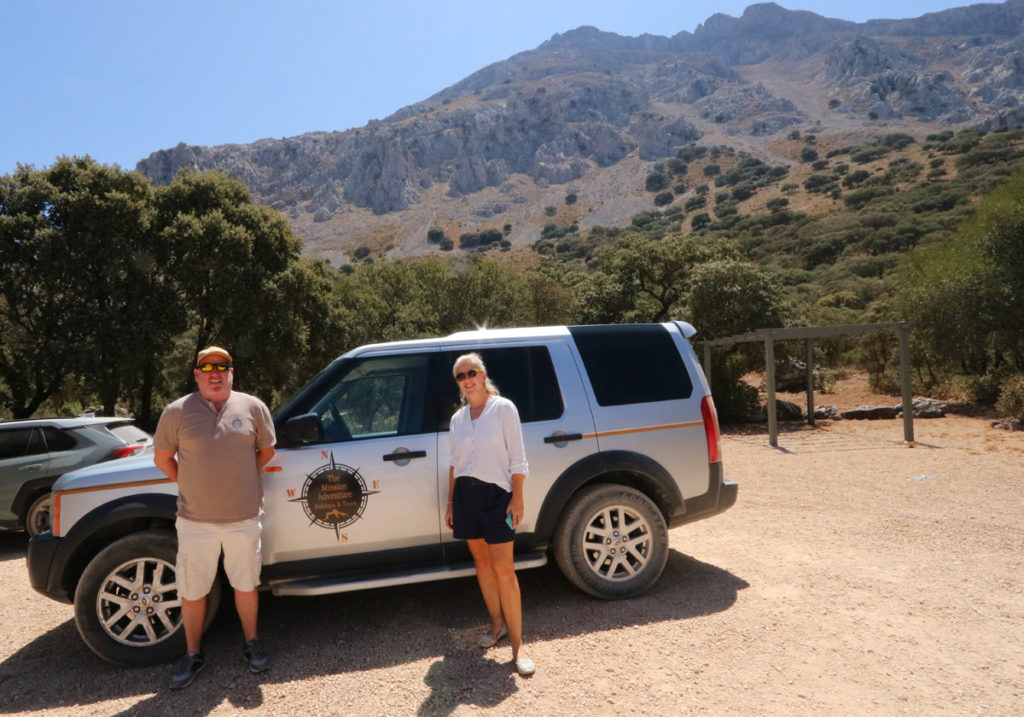
Contact Information
The tour: Mission Adventure Holidays. As mentioned, they also do a range of activities including hikes, rock climbing, horse riding, mountain biking…it’s all on the website.
The winery: Bodega Gross Hermanos.
Related: Hiking El Torcal de Antequera
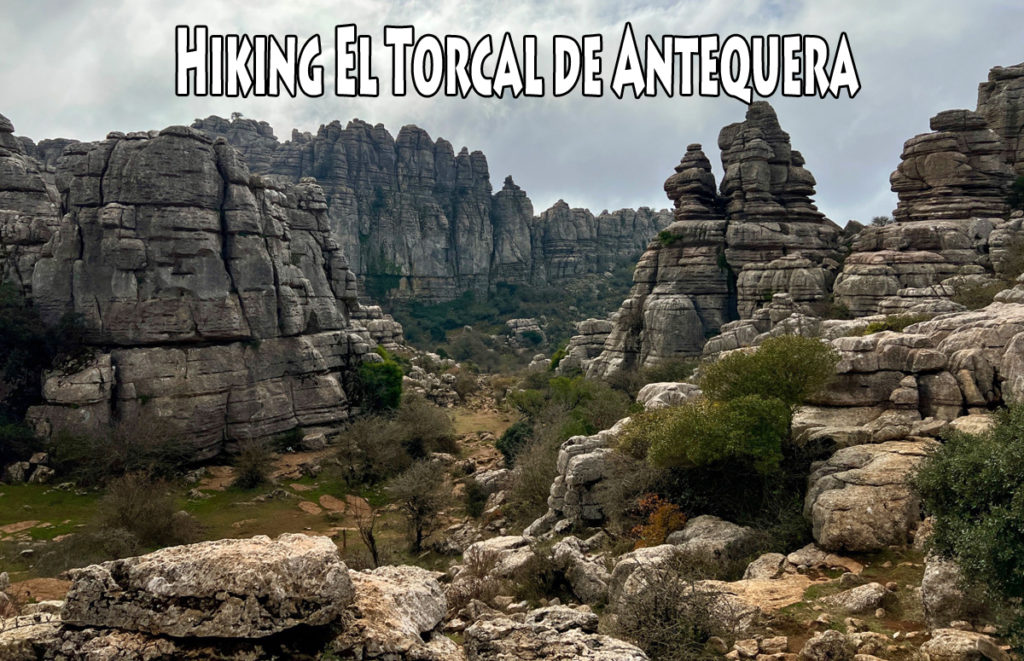
Related: 30 Photos that will make you want to visit Antequera (Spain)
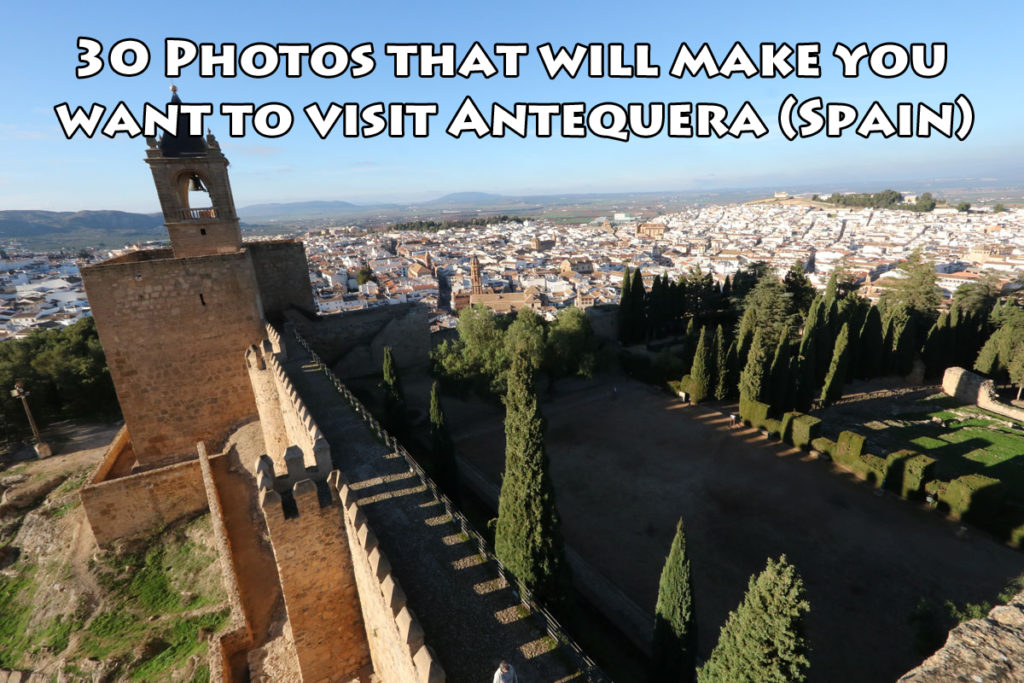
Related: Iglesia de Nuestra Señora de los Remedios – Antequera
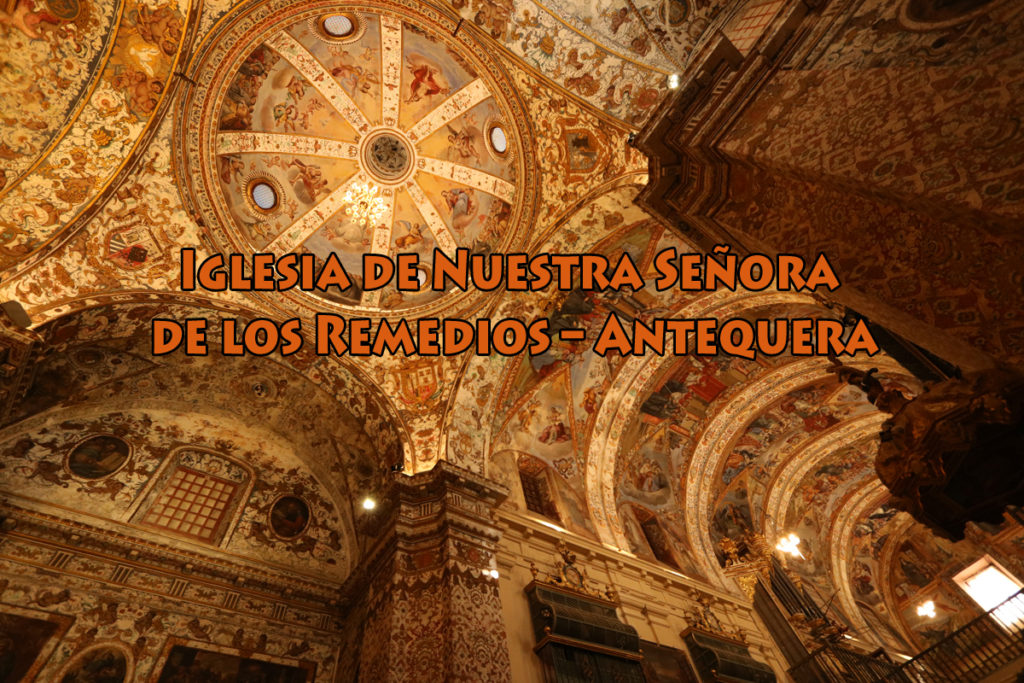

Leave a Reply